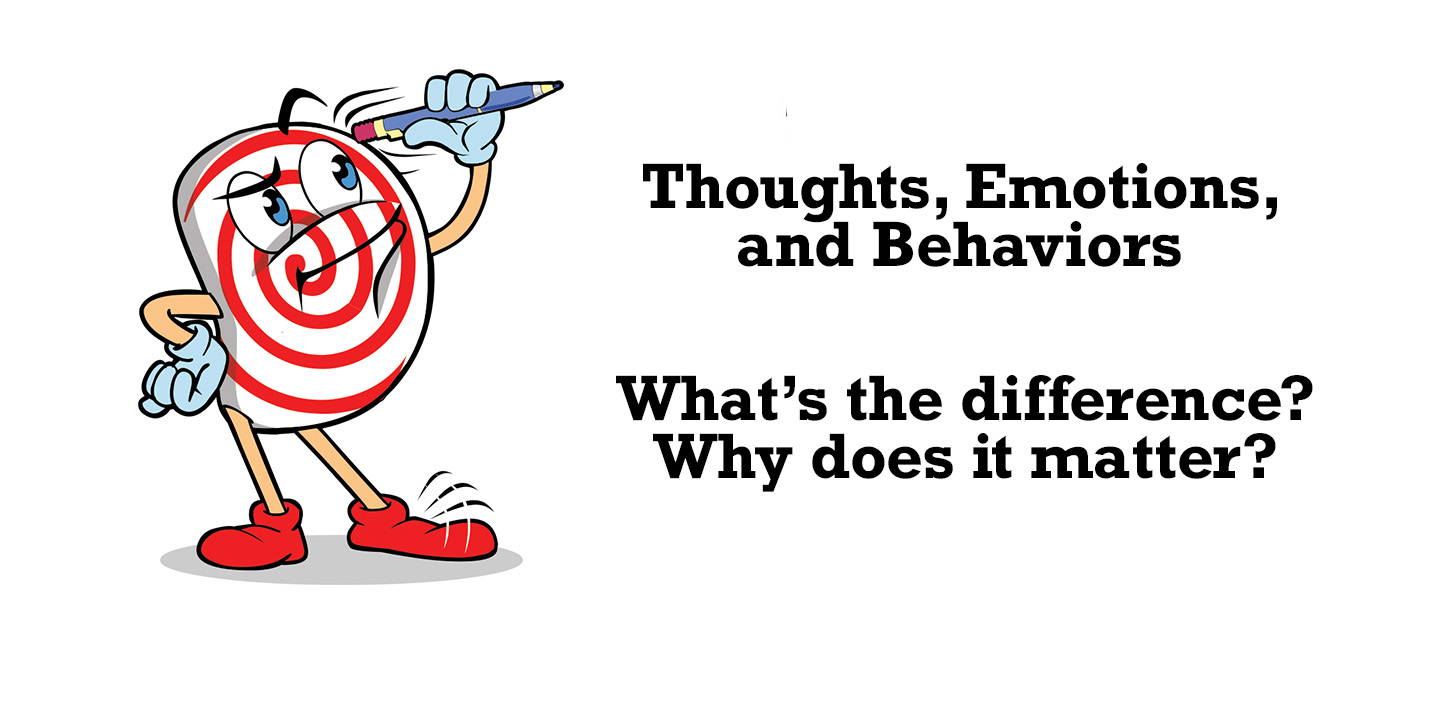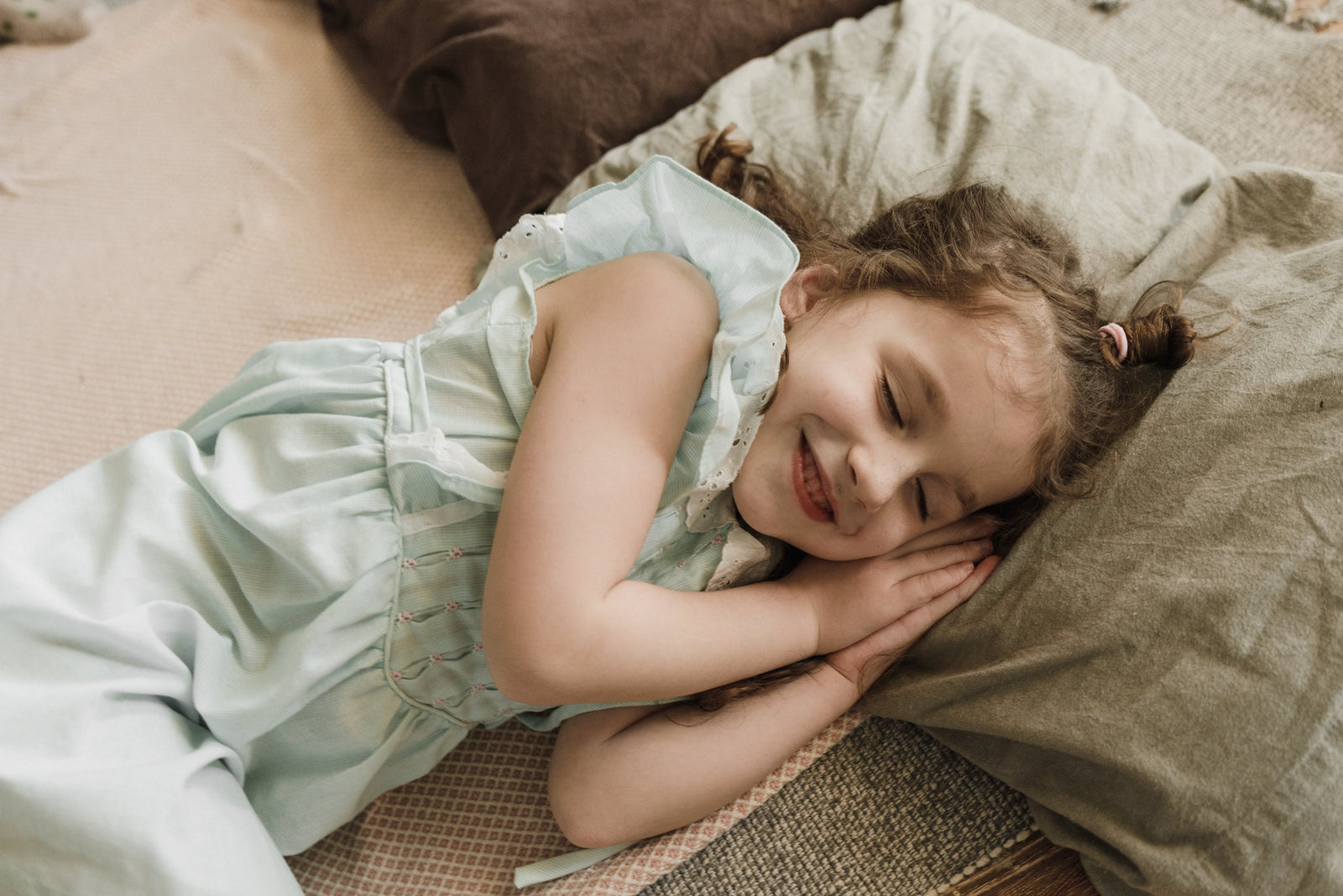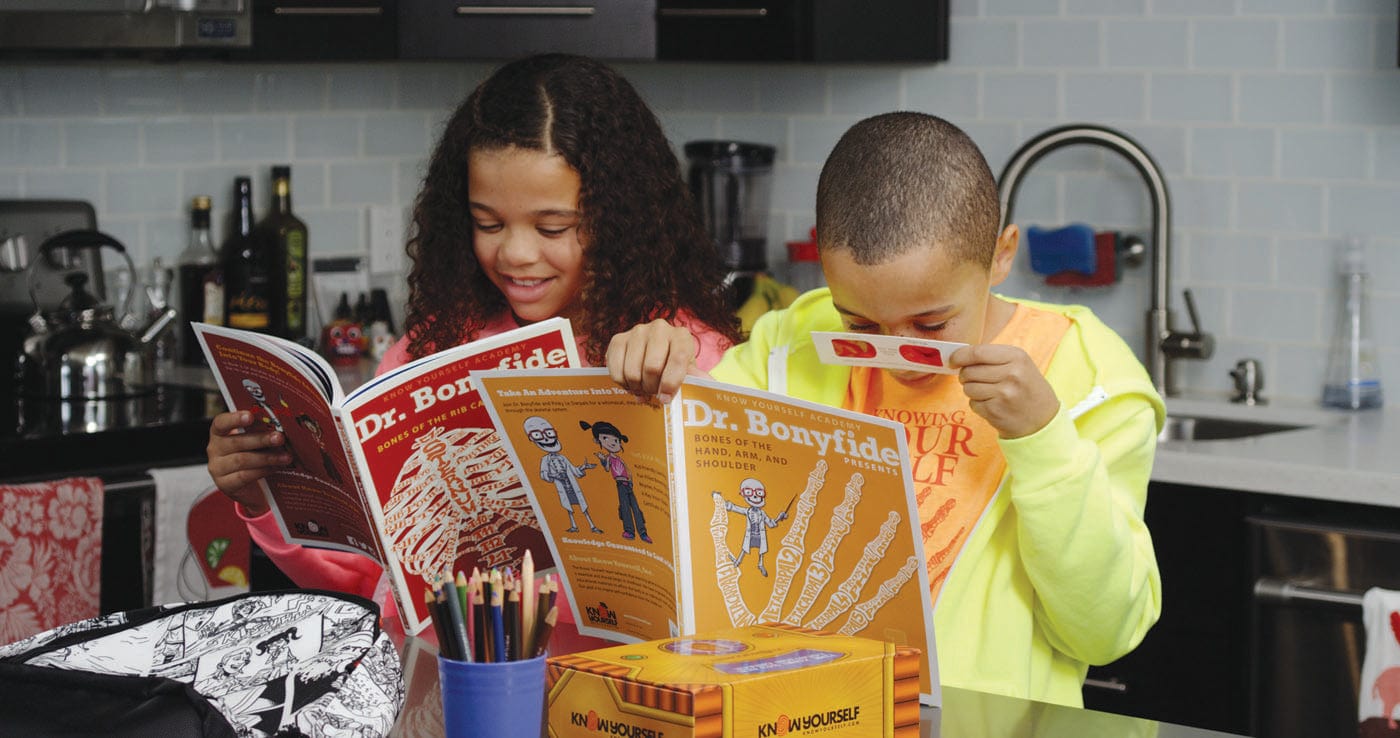
Our thoughts, emotions, and behaviors are all deeply connected. This can make it difficult to tell them apart.
For instance, "I feel like I'm not good at math," and "I feel like she doesn't like me" are both thoughts, even though they use the word "feel." Kind of confusing, right?
Let's take a closer look.
The Difference Between Thoughts, Emotions and Behaviors
Thoughts are what we use to make sense of the world around us. We have thoughts in reaction to everything that happens to us in daily life-how well we complete tasks, the things others say to us, and events that take place. For instance, if a friend says, "Your hair looks different today," you might think, "They noticed my hair-it must look great!" or "They noticed my hair-I'm sure it looks awful."
While emotions are also a reaction, they are a feeling or a mindset which we have labeled "happiness," "sadness," "anger," "embarrassment," and so forth. One way to think about the difference between thoughts and emotions is that thoughts can be described in sentences ("I enjoy playing baseball") whereas emotions tend to be just one word ("happiness," "joy," "excitement").
Behaviors are actions we take, and whether we are aware of it or not, they are based on our thoughts and emotions.
Thoughts, emotions, and behaviors all interact and impact each other. For instance, you might think that emotions just come and go, as if out of nowhere, but they often come from the way we think about the things that happen (sometimes called self-talk ).
Self-talk can change your outlook for the future and how you feel about yourself. If you thought your friend was commenting on your hair because it looked great, you might feel happy. If you thought they were suggesting it looked bad, you might feel embarrassed.
Thoughts, Feelings and Behaviors: How Young Children Learn to Express Feelings
Our thoughts are so powerful that they can change how we feel, how we view the world around us, and how we act. In this way, negative self-talk can actually make you feel worse than an event itself.
On the other hand, if something makes you feel a certain way, it can change your self-talk. If you do poorly on a test and it makes you feel sad, you might tell yourself that you aren't smart enough to do well in that subject.
Feeling sad about something doesn't make you less intelligent, but you tell yourself it does. That could make you study even less for the next test which would probably lead to another low score. Do you see how an action, a feeling, and a thought can all interact to help or hurt you?
This is not to say that all thoughts and feelings need to be positive all the time, but we are allowed to challenge our way of thinking, our emotions, and our actions to make sure they are constructive and not destructive.
Way back in the 1970's, psychiatrist Aaron Beck developed Cognitive Behavioral Therapy (CBT) as a way for people to break the destructive cycles and feel better in everyday life. CBT gives you the tools to help change the patterns that make you feel bad by helping you to explore new ways to think about and react to situations you face every day: What are alternative ways - perhaps kinder ways - to interpret something someone said or something that happened?
There are many techniques that allow us to start paying attention to our thoughts, feelings and actions. Using a journal to simply write down things that happen on a daily basis and what you think and feel about them can help you to get to know yourself better (we call that self-awareness).
Another approach is to use a thought record, which makes it easy to notice and explore thoughts and feelings (an example is provided in the activity below). If you're still not entirely sure how to sort out thoughts, emotions, and behaviors, don't worry: like most other things in life, understanding ourselves is something that takes practice - and patience.
Teaching Kids Thoughts, Emotions and Behaviors
By better understanding how thoughts, emotions and behaviors are different and can coexist, students can learn useful coping skills and social skills for dealing with anxiety and depression, and so much more. Try this activity with your children to help them differentiate happy, mad and sad with their behaviors.
Activity: Thought Record
Noticing the connection between an event and our reaction to the event is the first step towards a healthy relationship with our own thoughts, feelings, and actions. You can start noticing your feelings and reactions to events and record them using the template below.
Take time to think about whether your thoughts and feelings about a situation are appropriate to what happened. Could you have handled it differently? Here are some common negative thought patterns to look out for that can lead to feeling bad and sometimes even cycles of destructive behavior.
- Mind-reading: Thinking you always know what others must be thinking and feeling ("The teacher didn't call on me. She must think I'll say something dumb.")
- Only focusing on the negative and filtering out the positive ("I had a lot of fun playing a game with my friends, but it doesn't matter because I didn't win.")
- Always expecting a catastrophe, or worst-case scenario ("I'm sure my first day will be terrible!")
- Assuming that if you feel something, it must be true. ("I feel like I'm not smart, so I must not be smart.")
- Thinking you're always to blame("I can't do anything right")
- Thinking everything has to be perfect or it's not good at all ("We didn't win the football game. I must not be a good player.")
If you encounter any of these negative thought patterns, consider ways to look at the situation in a more positive light, that's kinder to yourself. What would you say to a friend if they thought these things about themselves?
As you fill out this chart, ask yourself: If I encountered this same situation again, would I behave or think differently? If so, how does that make you feel about the situation?
Get your thought record here
Thought Record (Online Version)
| What happened? | What thoughts did I have? | How did I feel? (Emotions) | What did I do about it? (Behaviors) | How else could I have thought about it? | What else could I have done? |
|
|
|||||
|
|
|||||









Leave a comment (all fields required)